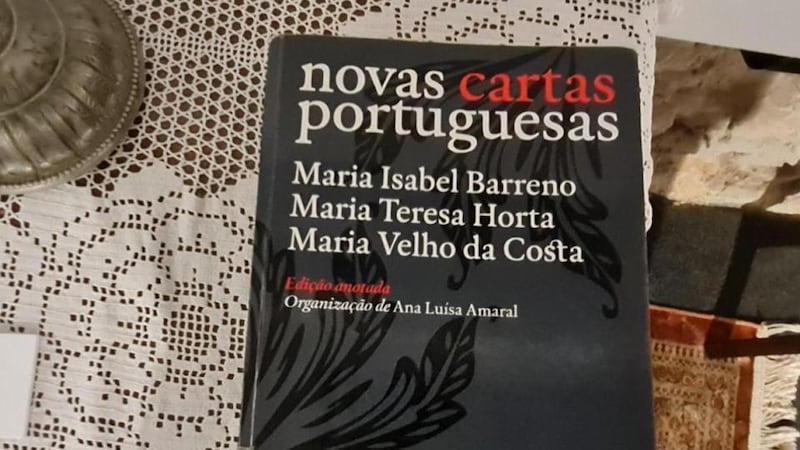Just beyond St Anthony's Church in Lisbon, with a little help from the man himself, you'll find the Museu do Aljube.
The former jail for political prisoners of Antonio Salazar’s dictatorship has since 2015 been home to a museum about the resistance to the fascist Estado Novo.
The first floor of the building, which once detained “women of ill-repute”, is hosting an exhibition highlighting the role of women in the struggle and in particular the case of “The Three Marias”.

In 1971, over the course of nine months, Maria Isabel Barreno, Maria Teresa Horta, and Maria Velho da Costa wrote Novas Cartas Portuguesas. The rather impenetrable collection of unsigned essays, poetry, stories and letters draws on the 17th-century Letters of a Portuguese Nun, obsessed with a French soldier who abandoned her.
Reviewing the English translation in 1975 for the New York Times, Jane Kramer wrote that as a feminist work The Three Marias' book "is in trouble" and she was "bored silly by too many hymns to the womb and the languid, helplessly seduct lye body and too much heavy eroticism turned inward on itself".
But the Portuguese censors ensured it became something of a sensation by destroying and banning it three days after its publication in 1972.
The authors were charged with "abuse of the freedom of the press" over its "irremediably pornographic content intended to corrupt public morals", an offence that could carry a custodial sentence. Salazar's successor Marcelo Caetano described them as three women "who aren't worthy of being Portuguese".
The primacy of the Catholic Church in shaping Portuguese society echoed how the Irish State was developing in the same period
The controversy drew international attention and the Marias’ cause was taken up by activists in the US and France among other countries while the book was translated into several languages.
The book went against the prevailing political ideology and the “comfort of the great certainties” of the regime Salazar had declared in the 1930s: “we don’t discuss God and virtue; we don’t discuss fatherland and its history; we don’t discuss authority and its prestige; we don’t discuss family and its ethics”.
Women’s position as second-class citizens in this environment was underlined by the Portuguese penal code which said a man could murder his adulterous wife and only have to “leave his district” for six months.
This “symbolic penalty” was cited by a judge in 2017 when upholding a suspended sentence for two men who attacked a woman with a nail-spiked club.

Conservative society
The primacy of the Catholic Church in shaping Portuguese society echoed how the Irish State was developing in the same period. Many in Ireland expressed admiration for Salazar’s regime with Eamon de Valera praising its “progressive and Christian manner” in the Dáil in 1941.
Maintaining the conservative society was the job of Portugal's secret police, PIDE. The museum, whose new director is Rita Rato, a former MP for the Portuguese Communist Party, is full of testimonials from people who were arrested and interrogated from the 1930s up to the fall of the regime.
There are memorials to some of those who were killed, including Raul Alves, who was thrown from the third floor of the PIDE headquarters in 1958. The museum's exhibit claims that after the wife of the Brazilian ambassador reported Alves's death, the interior ministry told her: "There is no reason to be so shocked. It is only a communist."
That is the culture the Three Marias challenged and the exhibition quotes Maria Teresa Horta, the only surviving author: “It was dangerous, we were in a fascist regime, we went to the Monicas prison [another women’s prison on a former convent in Lisbon]. They wanted to punish us so badly that they even pretended it wasn’t a political offence, we were interrogated by the morality police, in the same place prostitutes were detained.”
The trial only concluded following the April 25th, 1974 Carnation Revolution which ended the regime (so called as crowds gave the flowers to the soldiers that carried out the coup).
On May 7th, they were acquitted and “ordered to go in peace with carnations to the chest”. The judge said: “The book isn’t pornographic or immoral. Quite the opposite; it’s a work of art of the highest quality.”
Two years later, the new Portuguese constitution enshrined the absolute equality of rights between men and women. And while much may have changed in the decades since, culminating in the liberalisation of abortion laws in 2007, the museum offers a reminder “to ensure that our future is not amputated from our past”.











